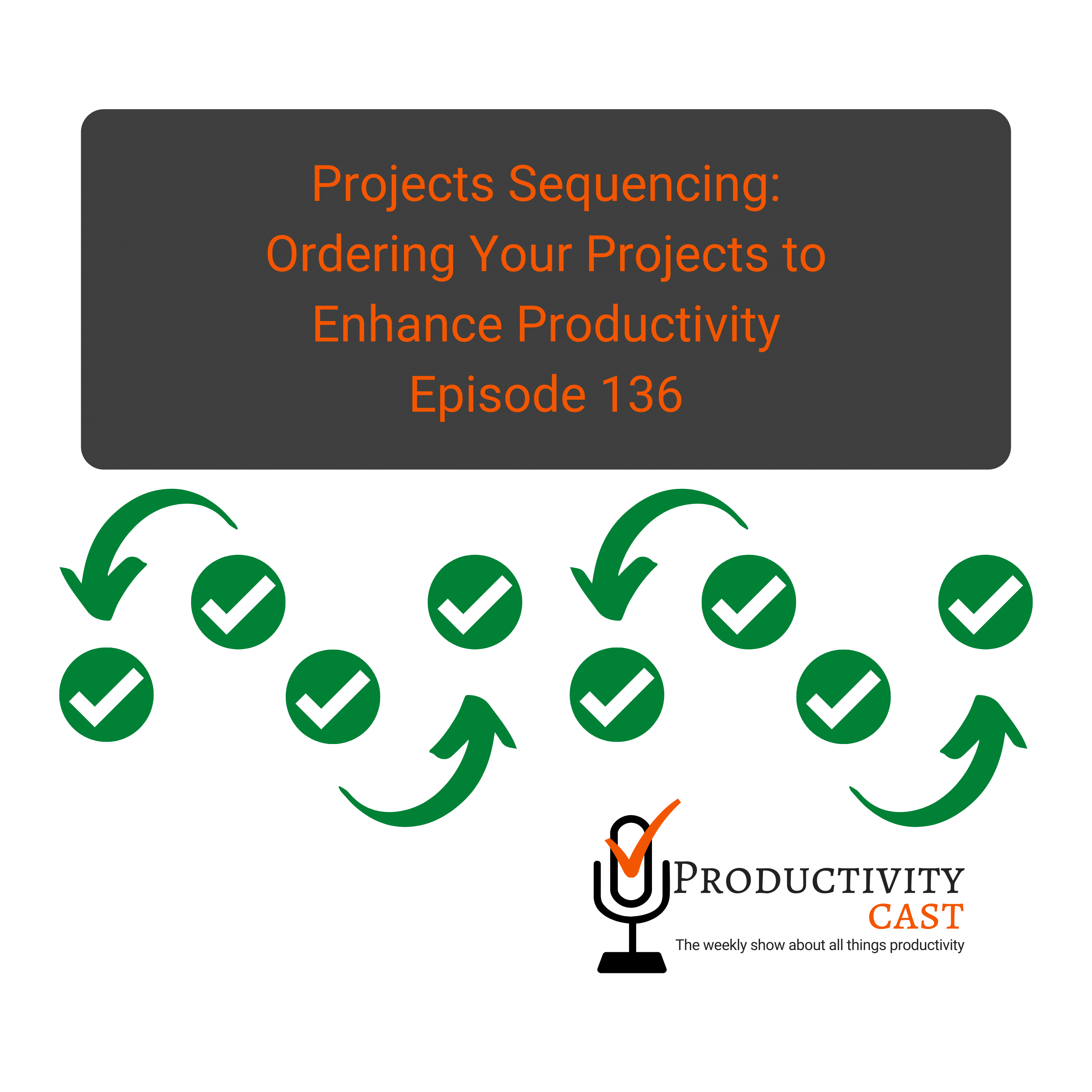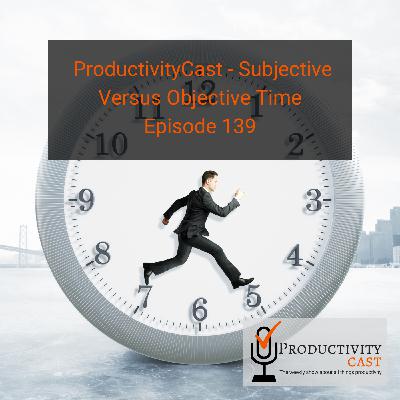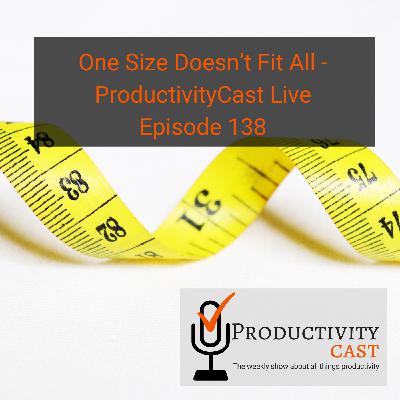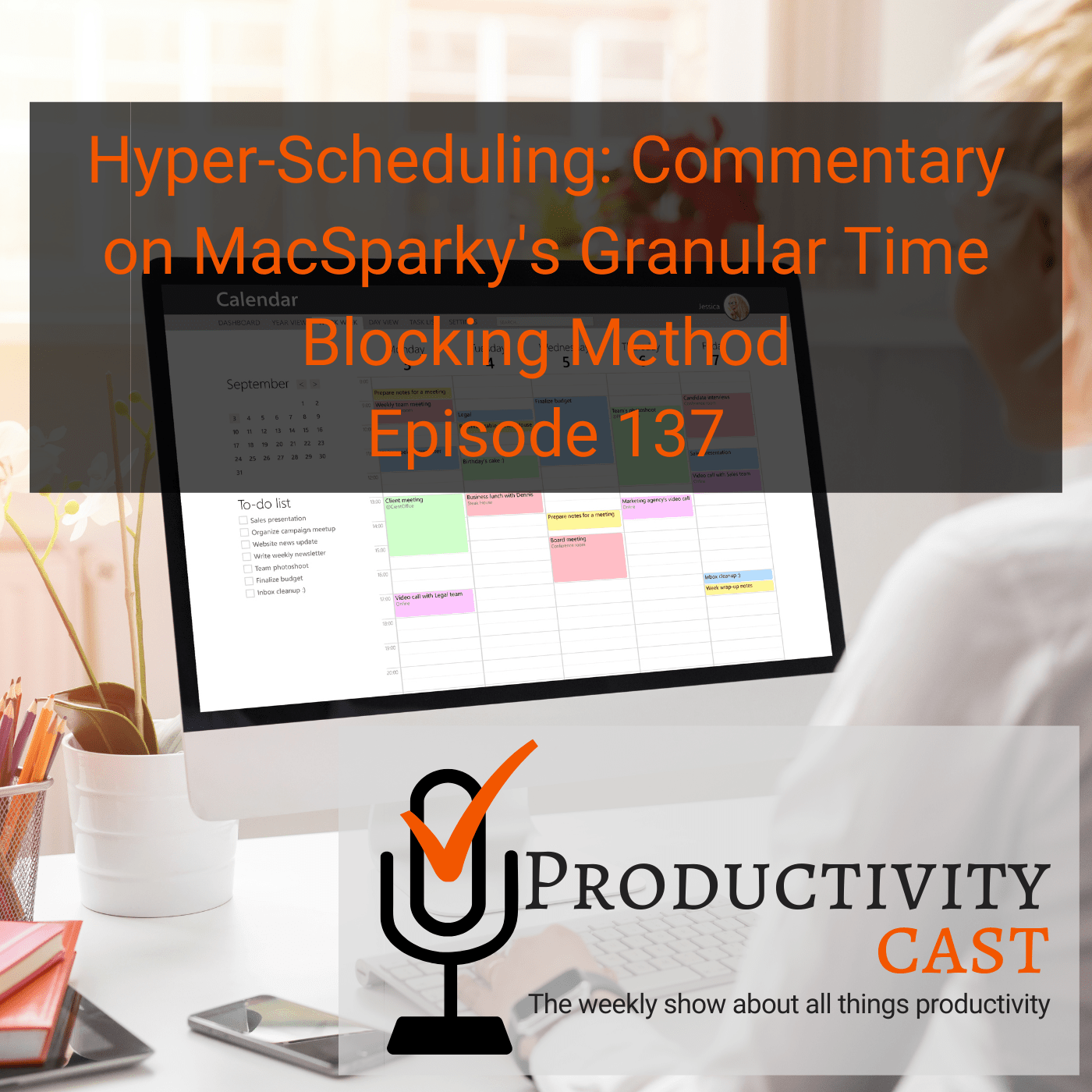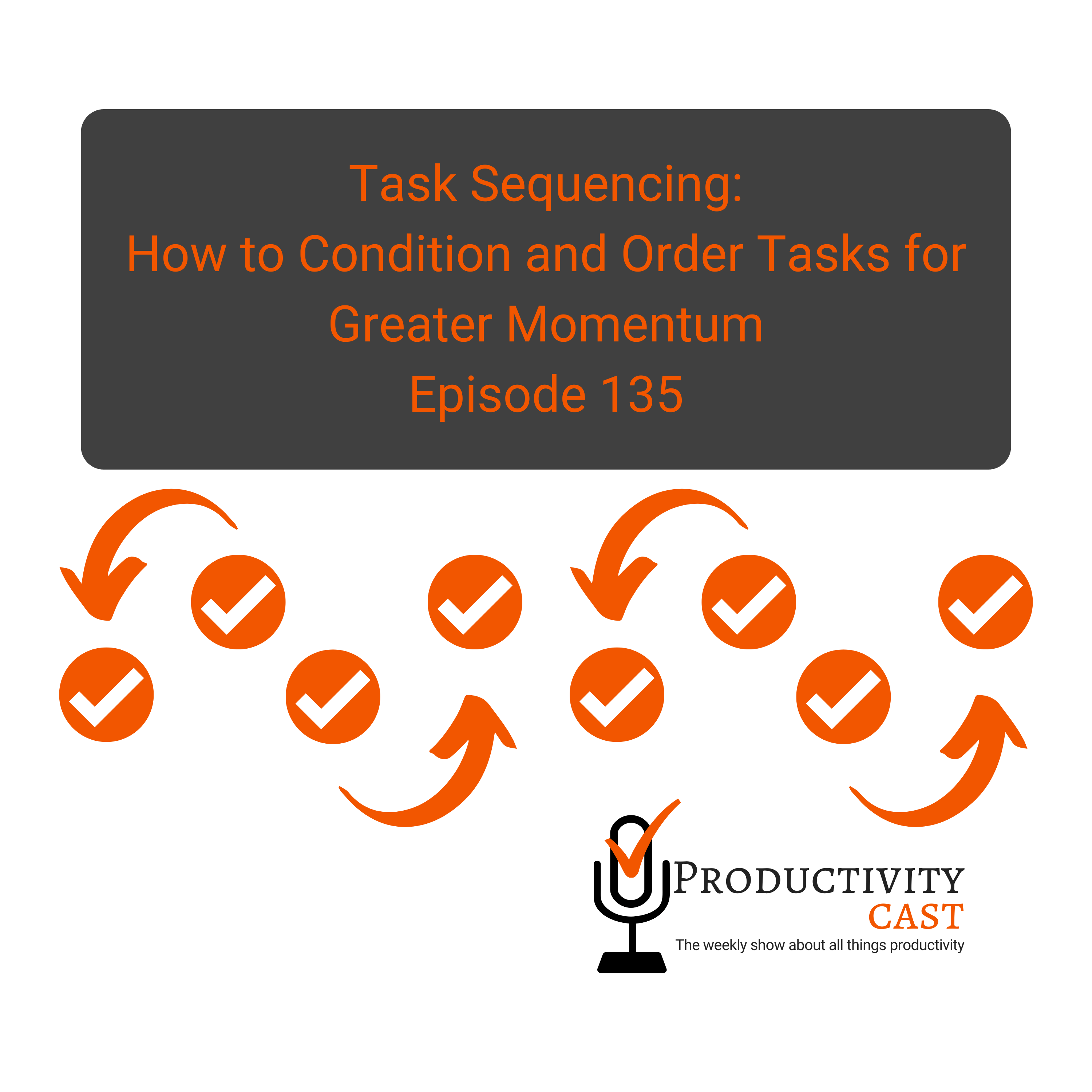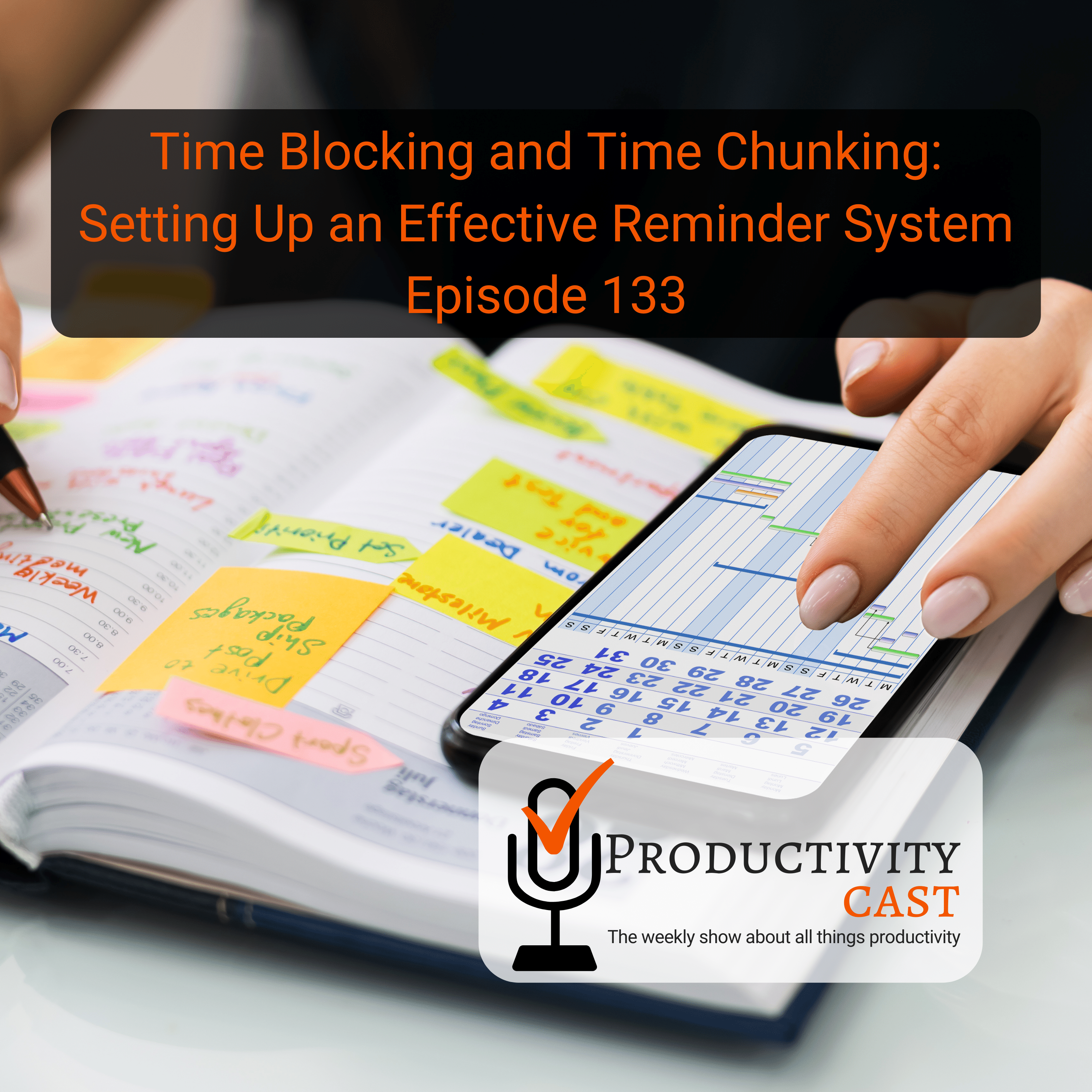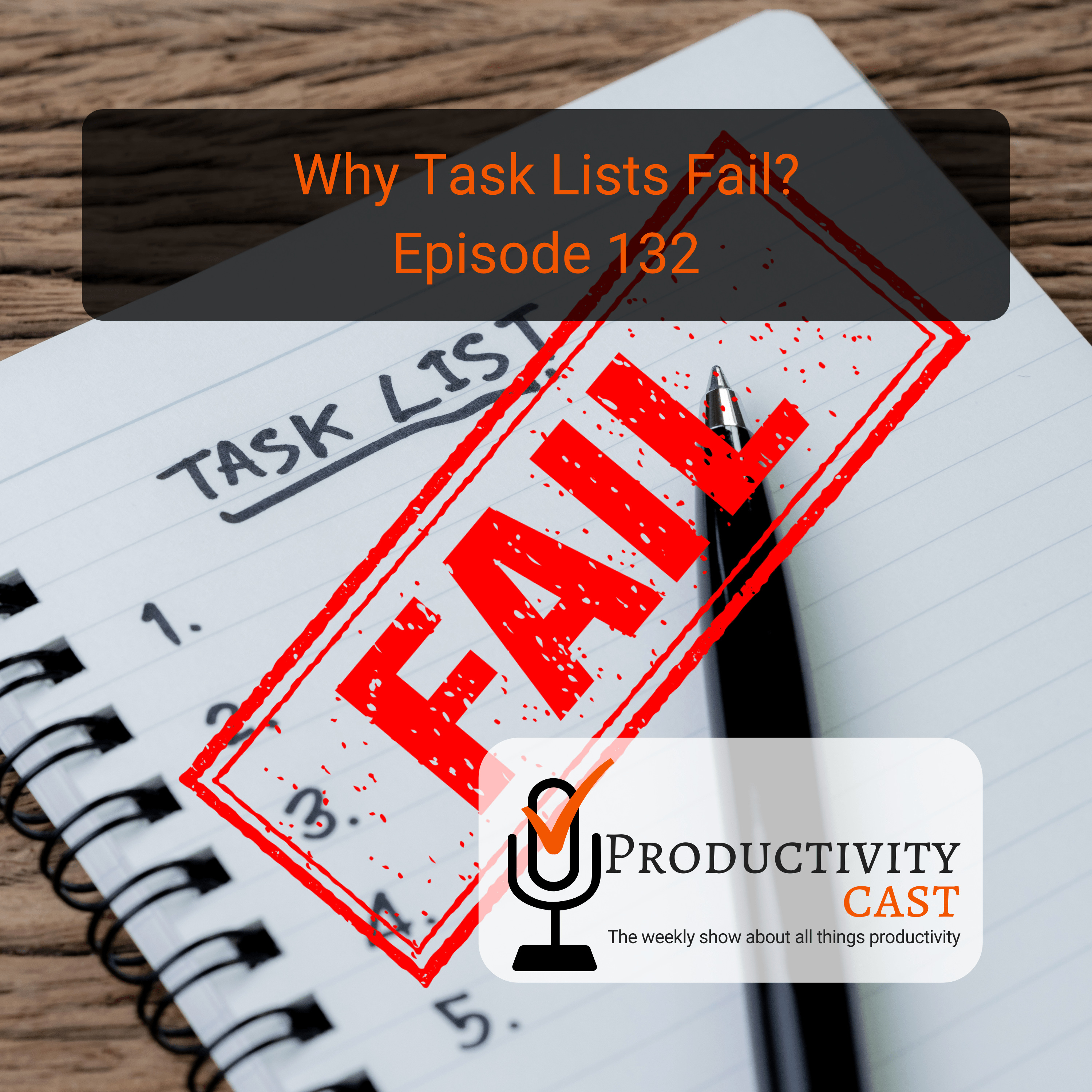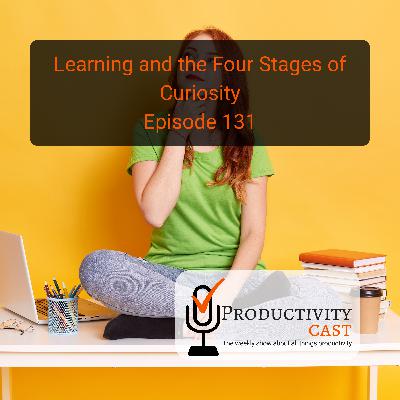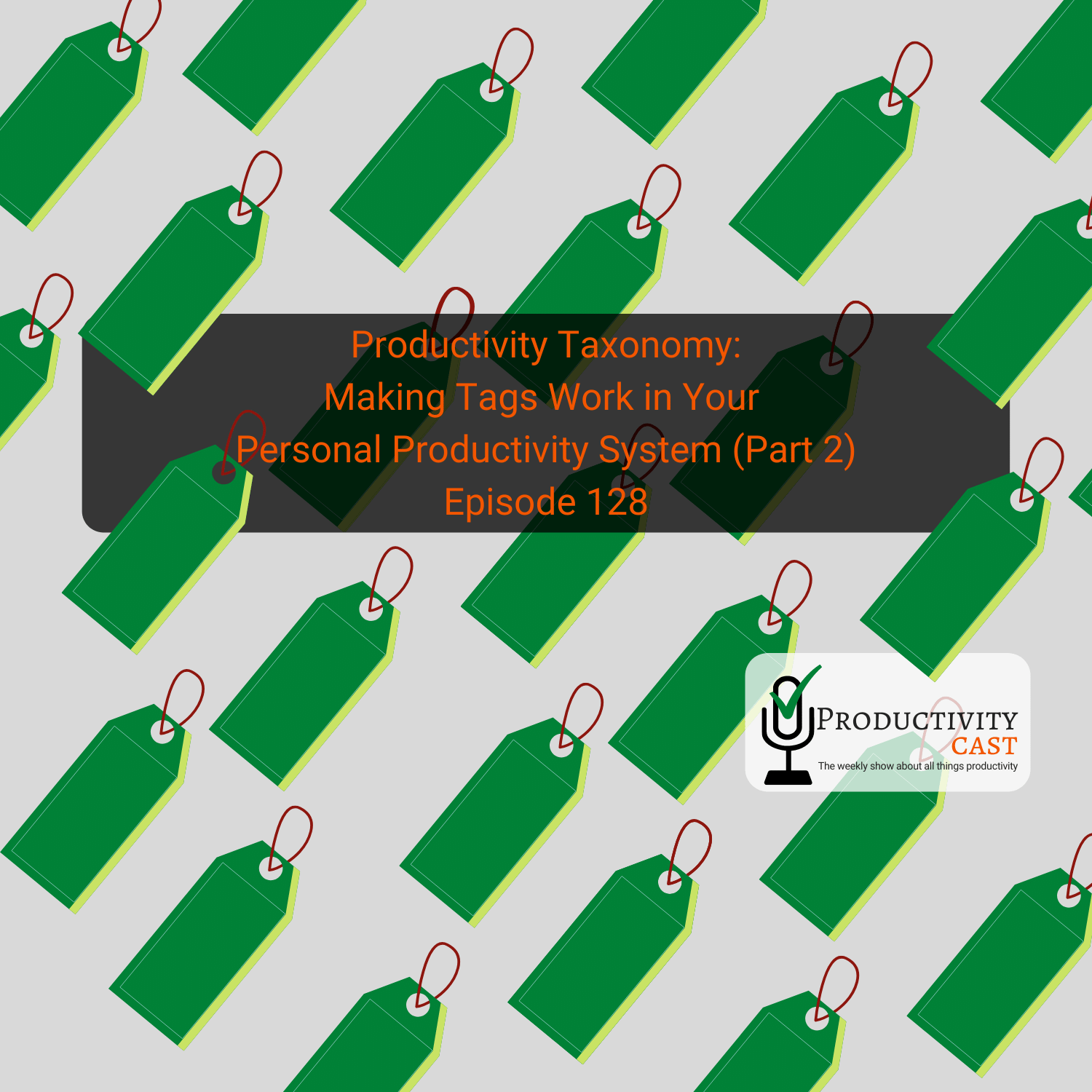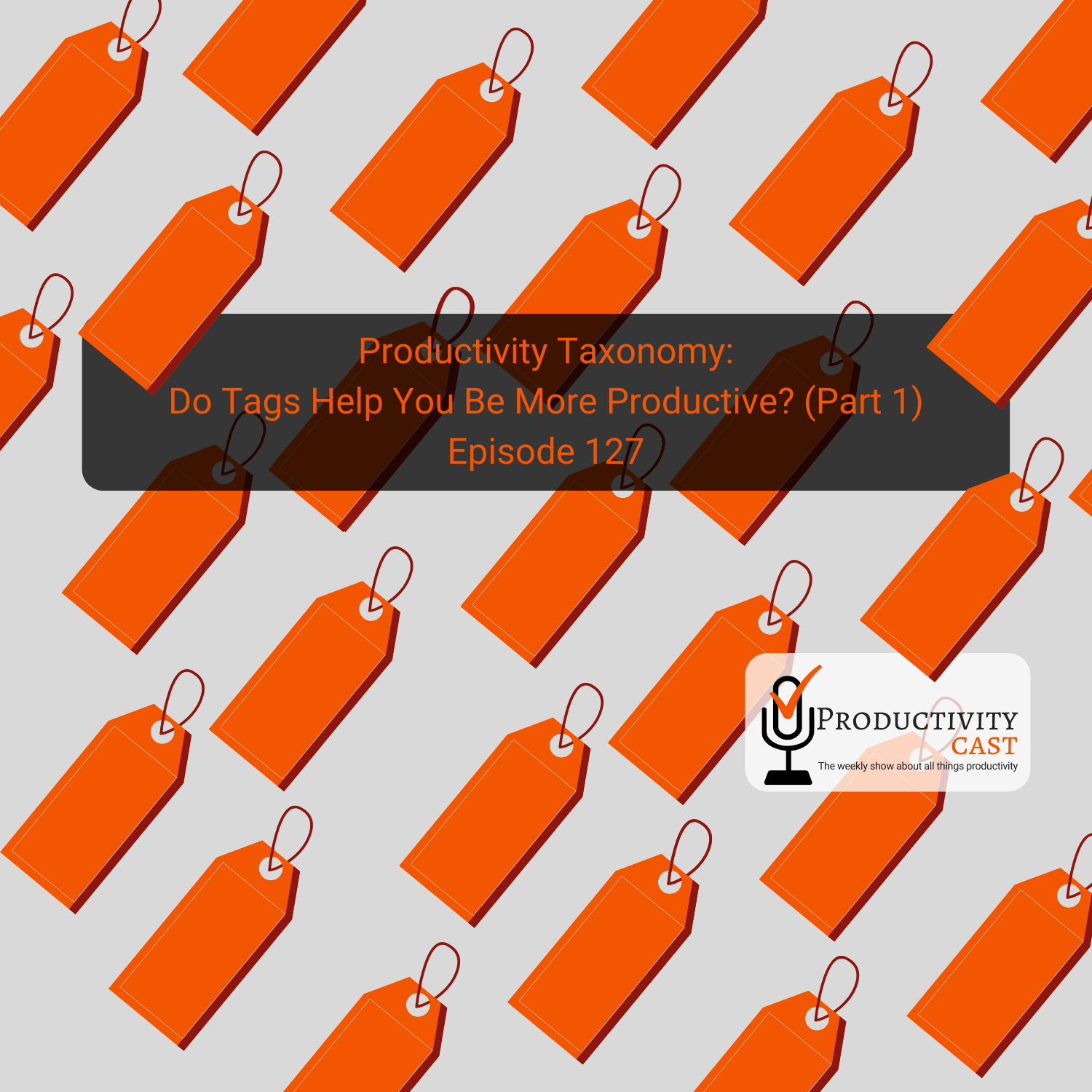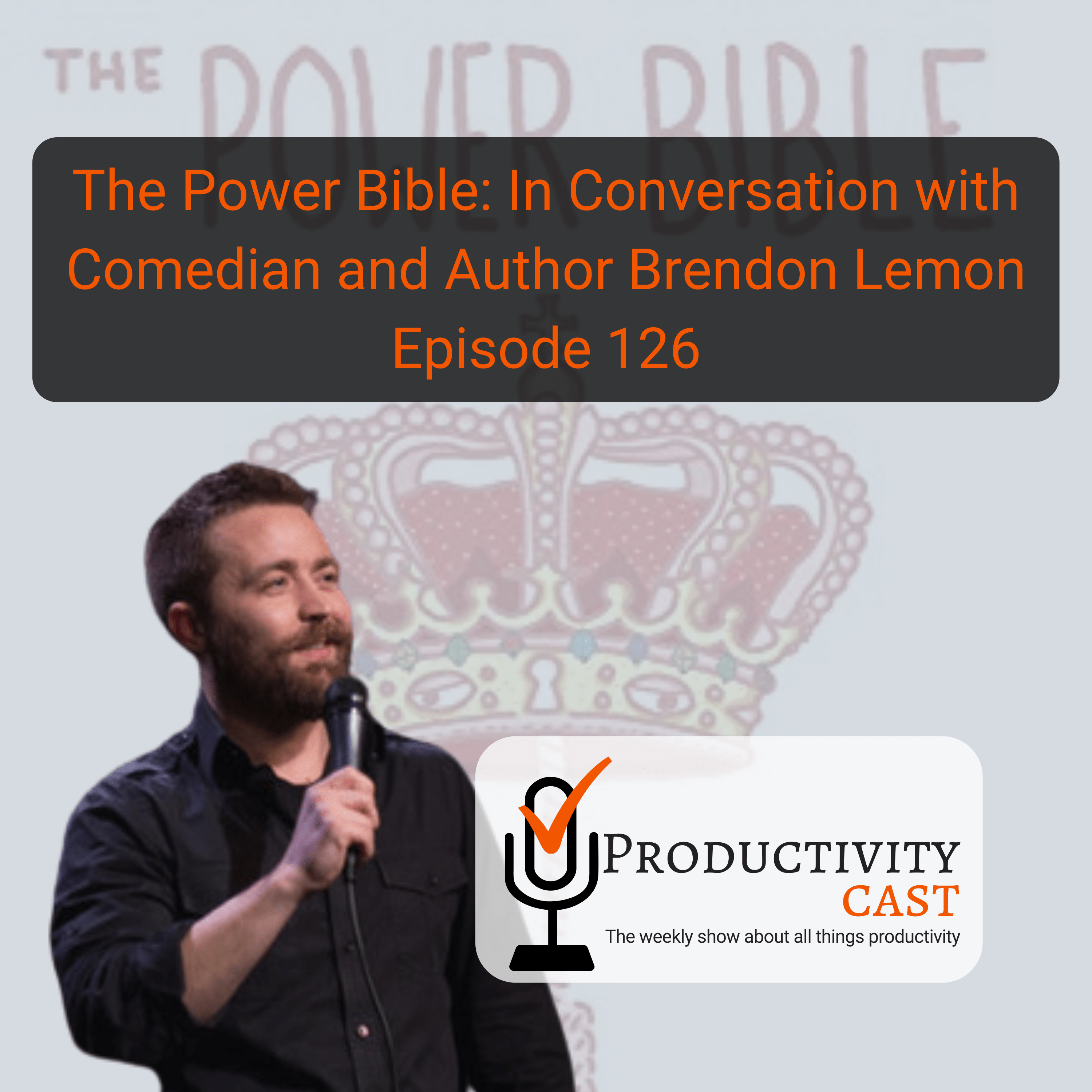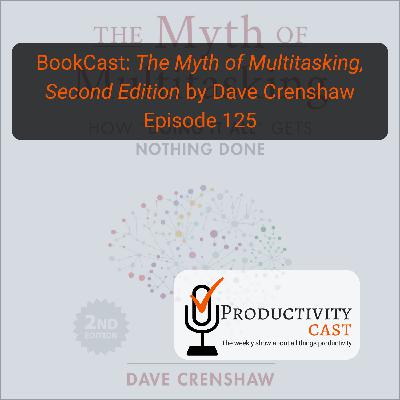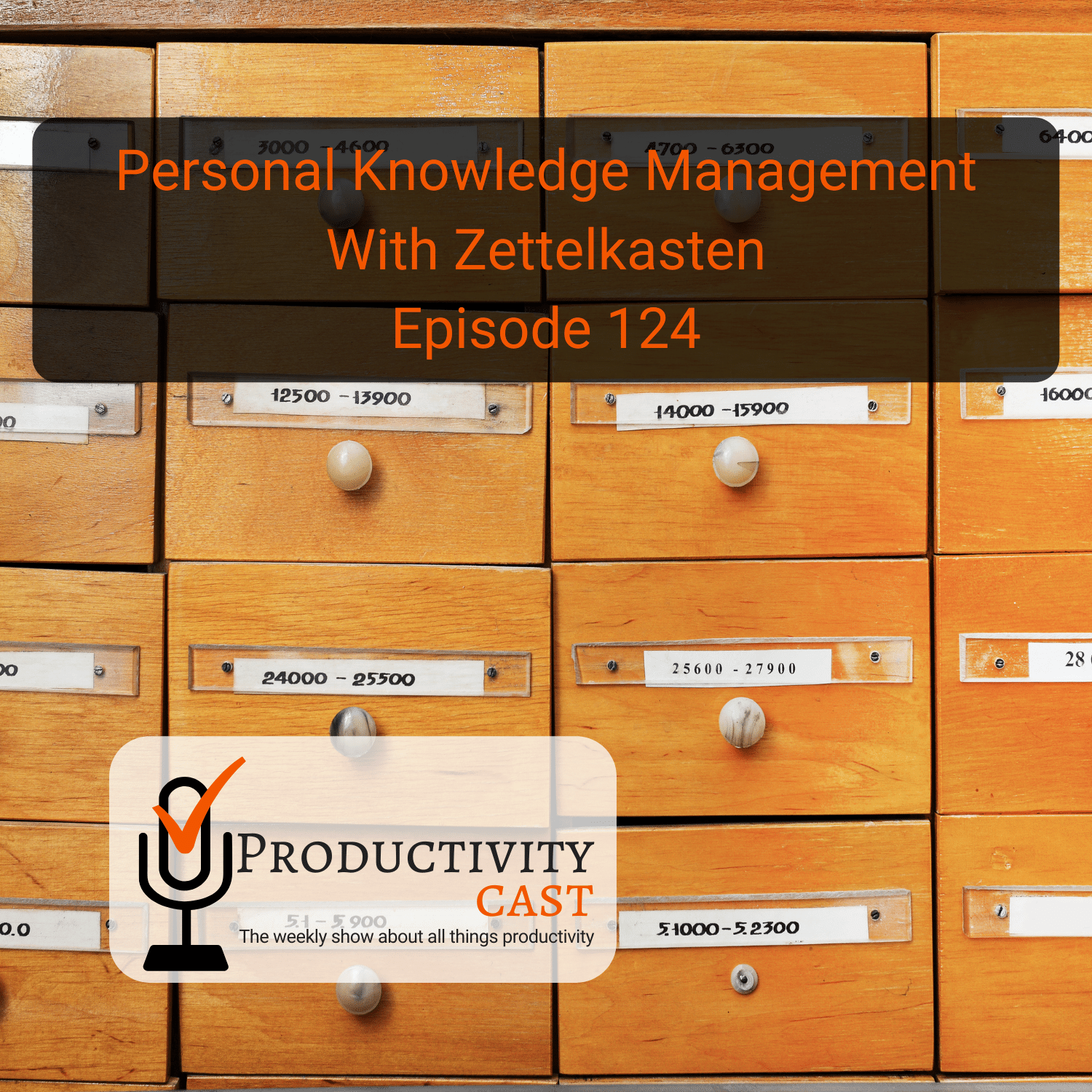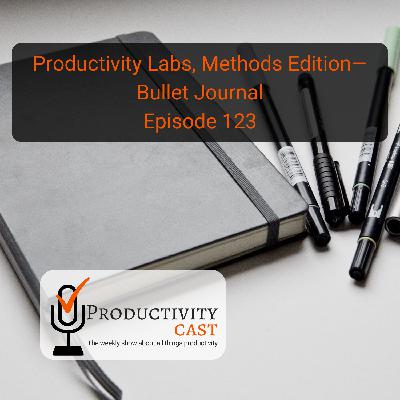Projects Sequencing: Ordering Your Projects to Enhance Productivity
Description
In this week’s episode, the ProductivityCast team continues their conversation about sequencing for greater productivity, this time about ordering projects to enhance efficiency and effectiveness.
(If you’re reading this in a podcast directory/app, please visit https://productivitycast.net/136 for clickable links and the full show notes and transcript of this cast.)
Enjoy! Give us feedback! And, thanks for listening!
If you’d like to continue discussing Projects Sequencing: Ordering Your Projects to Enhance Productivity from this episode, please click here to leave a comment down below (this jumps you to the bottom of the post).
In this Cast | Projects Sequencing
Show Notes | Projects Sequencing
Resources we mention, including links to them, will be provided here. Please listen to the episode for context.
Raw Text Transcript
Raw, unedited and machine-produced text transcript so there may be substantial errors, but you can search for specific points in the episode to jump to, or to reference back to at a later date and time, by keywords or key phrases. The time coding is mm:ss (e.g., 0:04 starts at 4 seconds into the cast’s audio).
Voiceover Artist 0:00
Are you ready to manage your work and personal world better to live a fulfilling productive life, then you’ve come to the right place productivity cast, the weekly show about all things productivity. Here, your host Ray Sidney-Smith and Augusto Pinaud with Francis Wade and Art Gelwicks.
Raymond Sidney-Smith 0:17
And Welcome back, everybody to productivity cast, the weekly show about all things personal productivity, I’m Ray Sidney Smith.
Augusto Pinaud 0:22
I am Augusto Pinaud.
Francis Wade 0:24
I’m Francis Wade.
Art Gelwicks 0:25
And I’m Art Gelwicks.
Raymond Sidney-Smith 0:26
Welcome, gentlemen, and welcome to our listeners to this action packed episode of productivity cast, I’m just going to call it this is going to be a lot of fun. We’re going to talk today about really the other side of sequencing. We talked about task sequencing in the last episode. And in this episode in this cast, I wanted us to talk about projects sequencing, why would we benefit from it? what are maybe some of the pros and cons? What are some of the examples of ways in which we use sequencing in our own productivity systems, and potentially some pitfalls, some things that we see folks around us experiencing in terms of troubles and challenges, and then we’ll end with maybe just some Quickstart tips, some tips and tricks for you to be able to get started with projects sequencing, if you’re not already doing it? Let’s start off with why what is the reason for someone to be able to and want to sequence projects, which are different than tasks? Can you give a compare and contrast there for folks, and then we’ll go from there,
Francis Wade 1:32
I think we’ve all been in that situation where we messed up a project so bad, because we thought it would be a short thing, or it would be a minor, you know, minor commitment, only to realize as opposed to two hours, it took 20. And as a result in crossed into an gotten away of other projects. And in retrospect, we look back and said to ourselves, boy, if I just sequenced it differently, if I had just focused on the one, and then decided to do the other at some point in the future. If I just applied a little bit of insight and maybe a little bit conservative, I could have saved myself a lot of heartache. So I think those who are interested in Project sequencing are those who take on larger projects, those who get asked to join lots of projects. But above all, there are people who’ve been burned by making mistakes by not sequencing projects correctly. I think that I’m sure that’s what brings most of us that are called today.
Art Gelwicks 2:37
It’s one of the reasons why doing retrospectives uncompleted projects is so important, because it’s the only way to learn what the sequences should have been that you didn’t pick up in the first place. I mean, we assume we can figure those out, because we’ve done this, but because we’ve done this provides us the historical data and the insight. That’s what those retrospectives provides. So when we start talking about Project sequencing and task sequencing within a project scope, if you’re going to do that type of project, again, you need those learnings you need that insight? And if you fail to do it, what’s the old saying you’re doomed to repeat history?
Raymond Sidney-Smith 3:16
Yeah, what I hear is that there is a finite set of resources in our life, whether that be time and energy and other things. And while we should have an abundance mindset, we should understand that focus is necessary, and that we have to allocate resources. Well, in order to be able to get projects successfully completed. And by sequencing projects, were in essence, postponing certain things or conditioning, certain things, so that the more important things, or at least the more important things right now get done well. And from my perspective, it’s a standard of excellence in your personal productivity more than anything that forces projects to be sequenced. And the other side is that sometimes you just don’t have the resources to be able to do that project right now, that could be a time resource, that could be a financial resource that can be a labor resource, you need someone in order for something to happen. And so there becomes a conditioning of when these projects get put on to your current active status than not. So let’s talk a little bit about some of the examples in your own world where you benefit from being able to sequence projects in a way that really it helps you. I
Francis Wade 4:38
think it helps me to say no, frankly, that’s the biggest benefit for me, is that when someone comes along with red shiny object, the thing I’ve been waiting for all this time, and you know, they paint a picture of how great it will be to have me on the project. And it’s not something I had originally planned to do. But you know in that moment Mental of optimism you scan. If you only do a mental scan, you’re just back into trouble. But if you do a mental scan of your commitment, I use age, or I should be able to do that. And, and that comes because you haven’t done proper sequencing of your own projects ahead of time. So when the request comes, all you’re left with is a vague sense of Yeah, I think I’m I should be okay. But you don’t really have anything that you’re looking at, that’s written down, you don’t have anything on people, you have actually haven’t invested the time to do real sequencing, which you must do. If you’re someone who manages lots of projects and lots of tasks, you must have a an accounting, a written accounting of your long term commitments, otherwise, you become that guy. And we’ve all worked with that guy who says yes to everything. And that guy is a disaster. And if you find out that he says yes to everything halfway through your project, that he’s working with you on your big trouble. But that guy, we don’t want to become that guy.
Raymond Sidney-Smith 6:09
Who do you give projects to the busiest person in the meeting, right? The reality is, is that many times, when you are the productive person in the room, people start to pile on, because they recognize that you’re capable of being efficient and effective with your time. And that becomes a problem for you. So So understand, many of us here have been there, we understand that perspective. And saying no, is a way of potentially probably project sequencing, in the sense that you are, at the very least, pushing back against and setting boundaries against these kinds of, well, since Susan always gets everything done. Let’s put more on Susan’s plate. That’s, you know, both inappropriate, and you know, unhelpful to Susan. But it’s something that we have to be mindful of. And so you need to be able to set these boundaries to start, and then project sequencing becomes a little bit more useful. I’ll give one particular example where projects sequencing for me is just kicked in. So at any given time, I am doing quite a lot of learning. And I call them journeys. I call them quests, you can call them learning paths, whatever it might be. But in any given year, I decide what it is that I want to learn. And so this year, I have been on a a pretty thoughtful path toward upping my programming and coding skills. And so I’ve been learning these various coding platforms in order to be able to figure out where I want

